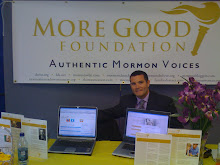
The purpose of this post is to illustrate the false sense of security that exists in our communities.
Below, I have listed the census numbers that reflect the populations of the community that I live in and the other communities, which I assist as a Firefighter. A large duty of a Firefighter is to educate the public in an attempt to mitigate future problems. It is not good for job security, but it is necessary for life safety.
You will notice that the combined numbers of residents who reside in the 3 communities within my fire district, totaled well over 30,000 people. By and large, the communities and its residents enjoy fast emergency response, with well trained personnel. This is in large part, because of the strategic locations of stations, and a full/part time staff who are available at almost any time.
For most, this service is sufficient and barring multiple, simultaneous call outs, will provide the citizens with adequate emergency care, but emergencies are rarely planned and rarely prepared for. I believe this is in part, because of the great job of most emergency responders. Do not get caught in a false sense of security zone.
At any given time within our district, 8 Firefighter, EMT/Paramedics will be working. Typically this is more than adequate coverage, however, if a mass emergency befell these cities, 8 trained personnel will simply not be enough. They will be overwhelmed immediately.
What does this mean?
It means that you will have to fend for yourself.
The Fire EMS system and departments will become triage centers. If you can get to them, the likelihood of their having supplies to treat you will be slim. The stock of emergency equipment would be exhausted within the first hour of triage.
What does this mean?
It means you will have to fend for yourself.
You will not be able to look to your 72 hour kit for help when dealing with a medical issue. You will not be able to go to the food storage shelves to find the necessary equipment you will need.
You will not likely have access to the neighborhood Physician. This WILL be a STRESSFUL time. ARE YOU PREPARED FOR THIS? Do you have more than a 5 dollar first aid kit? Have you had basic medical training? Do you know CPR? Can you control Bleeding? Do you have to tools to perform these functions if you know them? If you answered no to any of these, YOU ARE NOT PREPARED!
Do you rely on your spouse to know and be trained in these areas? Most of the time, the mother is with the children and the father is away. Moms, are you prepared? Can you give your child the Heimlich properly if he/she is choking? Parents, do your children know where to meet in case of an emergency, has a plan been established? Do you have a fire evacuation plan?
- WE MUST BEGIN NOW TO PREPARE FOR AND MITIGATE POSSIBLE OUTCOMES
72 hour kits represent the need to be self sufficient for 72 hours. Could you assist an injured friend or relative if it took that long for professional help to get to them?
In this worse case scenario, we will have to be self reliant. We will need more than a box of bandaids. We will need to know how to treat a variety of issues that we may be faced with. We will need the tools. Knowing how to eat does nothing for us if we lack the food.
Not long ago, we went on a call of a man who was in cardiac arrest. When we arrived, we found that the man's son was and Emergency Room Physician. After many failed attempts at reviving the man, his son ultimately had to call time of death. Could this have been different? He had the knowledge and training, but he lacked his tools. By the time our tools arrived it was simply too late. He expired on scene.
We must gather and train now. We must not feel safe because some imaginary, public service box has been checked. Fireman will risk their lives to save others, but there are simply not enough of them.
Please seek out local resources for first aid training. The Red Cross and American Heart Association conduct regular CPR/AED trainings. This blog has many resources that should help you. Please prepare for your familie's sake.
-Jonathan
http://prepare4emergencies.blogspot.com/2008/10/cpr-cardiopulmonary-resuscitation.html
http://prepare4emergencies.blogspot.com/2008/10/building-proper-first-aid-kit.html
Many other first aid resources can be found under the October section of the blog.
Population in July 2007: 9,583. Population change since 2000: +29.9%
Population in July 2007: 14,591. Population change since 2000: +72.4%
Population in July 2007: 8,957. Population change since 2000: +175.7%





